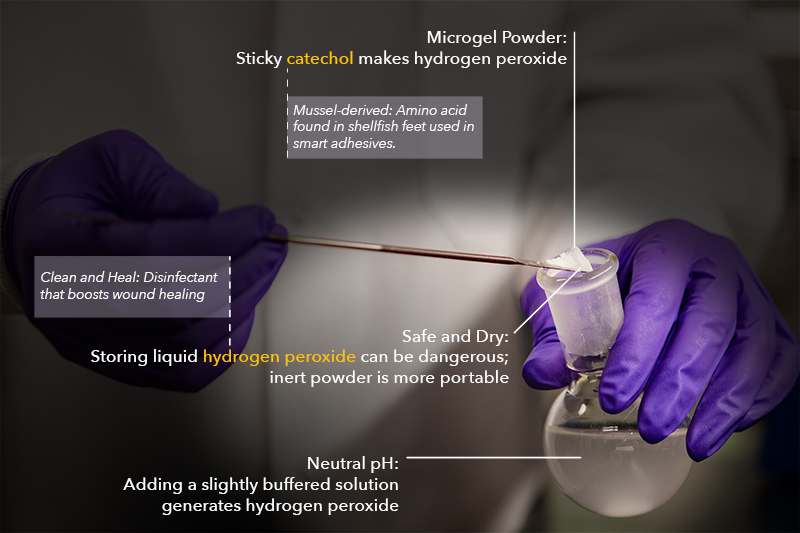While making smart glue, a team of engineers discovered a handy byproduct: hydrogen peroxide. In microgel form, it reduces bacteria and virus ability to infect by at least 99 percent.
Hao Meng’s doctoral project focused on biocompatibility testing and pulling a sticky amino acid out of mussels. Glue-like catechol shows promise for smart adhesives — a small jolt of electricity can turn the stickiness on and off — but that’s not its only potential use.
“In the process, Meng discovered the chemical reaction generated hydrogen peroxide as a byproduct of oxidation,” says Bruce Lee, associate professor of biomedical engineering and Meng’s PhD advisor at Michigan Technological University. “She started thinking, what if we could use the hydrogen peroxide?”
Click HERE to read the full article.

Microgel Powder: Sticky catechol makes hydrogen peroxide; Safe and Dry: Storing liquid hydrogen peroxide can be dangerous, inert powder is more portable; Neutral pH: Adding a slightly buffered solution generates hydrogen peroxide; Mussel-derived: Amino acid used to make innovative adhesives; Clean and Heal: Disinfectant that boosts wound healing.